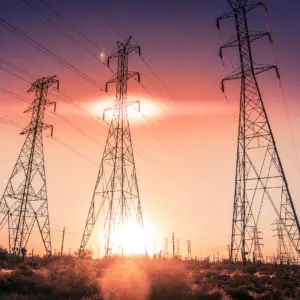AEP looking for FERC rate for PATH
By Power Online
CSA Z463 Electrical Maintenance -
Our customized live online or in‑person group training can be delivered to your staff at your location.

- Live Online
- 6 hours Instructor-led
- Group Training Available
The companies are seeking a transmission cost-of-service formula rate, effective March 1, 2008, that will provide for annual updates to the amounts that PJM Interconnection (PJM), an independent regional transmission operator, will charge utilities to recover the costs of the project.
The proposed rate includes recovery of a return on construction work in progress (CWIP) for the project and a return on equity of 14.3 percent, which includes an incentive award, consistent with federal policy to encourage significant transmission infrastructure and technology improvements. AEP and Allegheny each separately received FERC approval for incentive rate treatments for individually proposed transmission projects that ultimately became the joint Potomac-Appalachian Transmission Highline (PATH) project.
The PATH project includes approximately 244 miles of 765-kilovolt (kV) extra-high voltage transmission from AEPÂ’s Amos substation near St. Albans, W.Va., to AlleghenyÂ’s Bedington substation, northeast of Martinsburg, W.Va. Another 46 miles of twin-circuit 500-kV transmission will be constructed from Bedington to a new substation to be built near Kemptown, southeast of Frederick, Md. The total project is estimated to cost approximately $1.8 billion. PJM identified June 2012 as the date by which the PATH project needs to be operational.
“The PATH project addresses significant reliability concerns in the region, including overloads that will occur on more than thirteen existing transmission lines in Maryland, West Virginia, Virginia and Pennsylvania, as soon as 2012 if PATH is not built,” said Michael G. Morris, AEP chairman, president and chief executive officer.
“Establishing FERC rates for the project will provide the timely cost recovery necessary to obtain financing and allow us to move forward and bring the project on line in time to help prevent overloads on these lines.”
Once approved by FERC, the costs of the PATH project will be allocated to all electric utilities who serve retail customers in the PJM region.
AEP and Allegheny plan to begin work on the routing study and environmental assessment for the PATH project in January 2008. The companies anticipate seeking regulatory approvals for the project from the utility commissions in both West Virginia and Maryland in the fourth quarter of 2008, following the completion of the routing study. AEP and Allegheny are committed to working with landowners, neighboring residents, business owners, affected communities and regulators to minimize the environmental and land use impacts of the project.
“To ensure that this project is the best option for improving reliability in this region, we’ve designed PATH with advanced transmission technologies that will make it the most reliable, efficient and environmentally sensitive project possible,” Morris said.
“Extra-high voltage transmission inherently costs less and requires less land to carry the same amount of power than other transmission designs. The six conductor-per-phase design of the Amos to Bedington 765-kV portion of PATH, a design pioneered by AEP on its Wyoming-Jacksons Ferry transmission project, will reduce line losses by more than 40 percent over older 765-kV designs.
That means the line will transport more electricity and reduce the power generation necessary to meet electricity demand. Additional advancements in 765-kV and 500-kV conductor designs and new control technologies in the project’s substations also will enhance the reliability and efficiency of the PATH lines compared with other transmission lines.”











